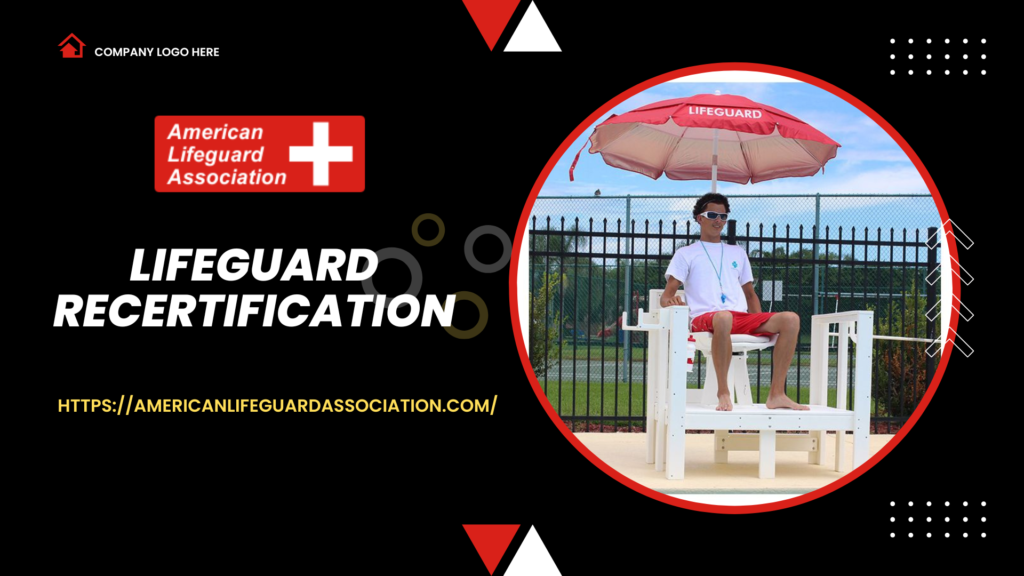Lifeguarding is a critical profession that requires constant training and certification to ensure that lifeguards are well-equipped to handle emergency situations. Whether you’re a new lifeguard or an experienced one, it’s important to keep your certification up-to-date to ensure that you can provide the best possible care to swimmers and beach-goers. Here are seven rules about lifeguard recertification that you should keep in mind.
Understand the certification requirements
Before you begin the recertification process, it’s important to understand the requirements for your certification. The requirements may vary depending on the certifying organization and the level of certification you hold. For example, the American Lifeguard Association requires that lifeguards complete a 5-hour online recertification course and demonstrate their skills in-person to a certified instructor. Knowing the requirements will help you plan for your recertification and ensure that you’re meeting all the necessary criteria.
Plan ahead
Recertification can take time and planning, so it’s important to start early. Don’t wait until the last minute to schedule your recertification course or skills assessment. Lifeguard certifications typically expire every 2-3 years, so plan to complete your recertification well before your certification expires. This will give you plenty of time to complete any necessary training or assessments and ensure that your certification is current when you need it.
Keep your skills up-to-date
Lifeguarding skills are critical for ensuring the safety of swimmers and beach-goers. Even if you’re an experienced lifeguard, it’s important to keep your skills up-to-date through ongoing training and practice. This can include attending refresher courses, practicing your skills with fellow lifeguards, and reviewing emergency procedures on a regular basis. Keeping your skills sharp will help you respond quickly and effectively in emergency situations.
Stay physically fit
Lifeguarding can be physically demanding, so it’s important to stay in good physical condition. This includes maintaining a healthy diet, getting regular exercise, and staying hydrated. Being physically fit will help you perform your duties as a lifeguard more effectively and reduce the risk of injury or fatigue.
Be prepared for emergencies
As a lifeguard, you may be called upon to respond to a wide range of emergency situations, from drowning to heat exhaustion. It’s important to be prepared for these emergencies by having the necessary equipment and supplies on hand, such as rescue tubes, first aid kits, and AEDs. You should also be familiar with emergency protocols and procedures and be ready to act quickly in the event of an emergency.
Stay up-to-date on safety protocols
Lifeguarding safety protocols and procedures can change over time, so it’s important to stay up-to-date on the latest standards and guidelines. This can include attending training sessions, reviewing safety protocols regularly, and staying informed about changes in the industry. Being knowledgeable about safety protocols will help you provide the best possible care to swimmers and beach-goers and ensure that you’re following best practices for lifeguarding.
Take your role seriously’
As a lifeguard, you have a critical role in ensuring the safety of swimmers and beach-goers. It’s important to take this role seriously and approach it with a sense of responsibility and professionalism. This means being reliable and punctual, following safety protocols, and treating all individuals with respect and dignity. By taking your role seriously, you’ll help to maintain a safe and secure environment for everyone.
In conclusion, lifeguard recertification is a critical part of the profession and requires careful planning and preparation. By understanding the certification requirements, planning ahead, keeping your skills up-to-date, staying physically fit, being prepared for emergencies, staying up-to-date on safety protocols, and taking your role seriously.
Also Read About: Why Should You Host Multiple Sites on the Same Server?
Swimming exercises in the pool
To further increase the effectiveness and efficiency of weight loss, there are exercises for swimming in the pool from aqua aerobics:
Running – go waist-deep in the pool, run in place, hold on to the side and bring your knees up.
The number of repetitions is up to 15 times. Jumps – jumps, moving alternately to different sides.
You can jump in place, bringing your knees up to your chest, keeping your abs tight. Jump – jump alternately on one leg without jumping out of the water.
Jumps for the inner thigh – in two counts: legs together, apart, as high as possible.
Go to the chest, slowly raise your legs, touching your hands.
For the stomach – sit on the bottom in a shallow place, put your hands on the back, do the “scissors” exercise.
Triceps – stand with your back to the side, lean on the edge with your hands and elbows, slowly lower and raise the body.
The rise should be sharp and the fall – slow. Bicycle – Lie in the water, spin the imaginary pedals with your feet, press your elbows to the body.
For the waist – stand on the side, raise straight legs to the sides and back.
Make it harder by raising your arm above your head and leaning to the side. With dumbbells – stretch your arms above your head, bend over.
Try to make short elastic circular movements.



